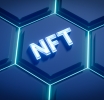
Unlocking Success: Finding the Perfect Fit for Your Trading Needs
In the dynamic world of trading, finding the right fit is paramount to achieving sustained success. Just as a craftsman needs the right tools to create a masterpiece, traders must align their approach with their unique style, preferences, and goals. The journey to trading success is influenced by several key factors including one’s trading style, choice of platform, strategy development, and commitment to continuous learning. This essay delves into these critical elements, offering insights into how traders can navigate their path effectively.

Unlocking Success: Finding the Perfect Fit for Your Trading Needs
Understanding Your Trading Style
To embark on a successful trading journey, it is essential first to understand your trading style. Trading styles vary widely and can include day trading, swing trading, and long-term investing, each requiring different levels of time commitment and risk tolerance.Day Trading: This style involves buying and selling securities within the same day. Day traders take advantage of small price movements and often make multiple trades per day. This approach requires a significant time investment and a high level of focus as decisions must be made quickly.
Swing Trading: Swing traders hold positions for several days or weeks to capitalize on expected upward or downward market shifts. This method combines technical analysis with a broader understanding of market trends.
Long-Term Investing: In contrast to the fast-paced nature of day and swing trading, long-term investing involves holding assets for several years. Investors in this category focus on fundamental analysis and typically endure market volatility with an eye towards long-term gains.
To determine which style suits you best, assess your personal preferences and strengths. Consider factors like your risk tolerance, available time for trading activities, and your capacity for quick decision-making under pressure.
Choosing the Right Trading Platform
Once you’ve identified your trading style, the next step is choosing an appropriate trading platform. A good platform should offer features that align with your needs while providing reliability and security.Key Features: Look for platforms that offer real-time data feeds, advanced charting tools, user-friendly interfaces, robust customer support, and mobile access if you need to trade on-the-go.
Popular Platforms Comparison:
MetaTrader 4/5: Known for its comprehensive technical analysis tools and automated trading capabilities.
Thinkorswim by TD Ameritrade: Popular among U.S.-based traders for its wide range of assets and research resources.
Interactive Brokers: Offers low-cost trades across various asset classes with advanced features suitable for experienced traders.
Choosing the right platform can significantly enhance your trading efficiency by providing you with vital tools for analysis and execution.
Developing a Solid Trading Strategy
A successful trader doesn’t rely solely on instincts; they follow a well-crafted strategy that guides their decisions in various market conditions.Structured Approach: Having a structured method prevents emotional decision-making which can lead to significant losses. A solid strategy provides a roadmap from entry to exit points based on predefined rules.
Key Elements:
Risk Management: Determine how much capital you are willing to risk per trade. Using stop-loss orders can help minimize potential losses.
Market Analysis: Incorporate both technical (analyzing charts) and fundamental analysis (evaluating economic indicators) into your strategy.
Backtesting: Test your strategy against historical data to gauge its potential effectiveness before risking real money.
Developing a comprehensive strategy requires time but is crucial in fostering consistent results over time.
Continuous Learning and Adaptation
In an ever-evolving market landscape, continuous learning is indispensable.Education’s Role: Enroll in courses or follow industry experts to stay updated on new techniques or changes in market regulations.
Adapting Strategies: Be prepared to adapt your strategies as market conditions change. Flexibility allows you to pivot when necessary instead of sticking rigidly to outdated methods.
The commitment to ongoing education not only sharpens your skills but also keeps you ahead in this competitive field.
Finding the perfect fit for your trading needs is an iterative process that demands introspection and flexibility. By understanding your unique trader profile, selecting suitable platforms, developing robust strategies, and committing to continuous learning, you set yourself up for sustained success in the financial markets. Remember that each component plays a critical role; overlooking any aspect could impede your progress towards becoming a proficient trader.
Trading success, Trading strategies, Trader profiles, Platform selection, Financial markets









Report
My comments